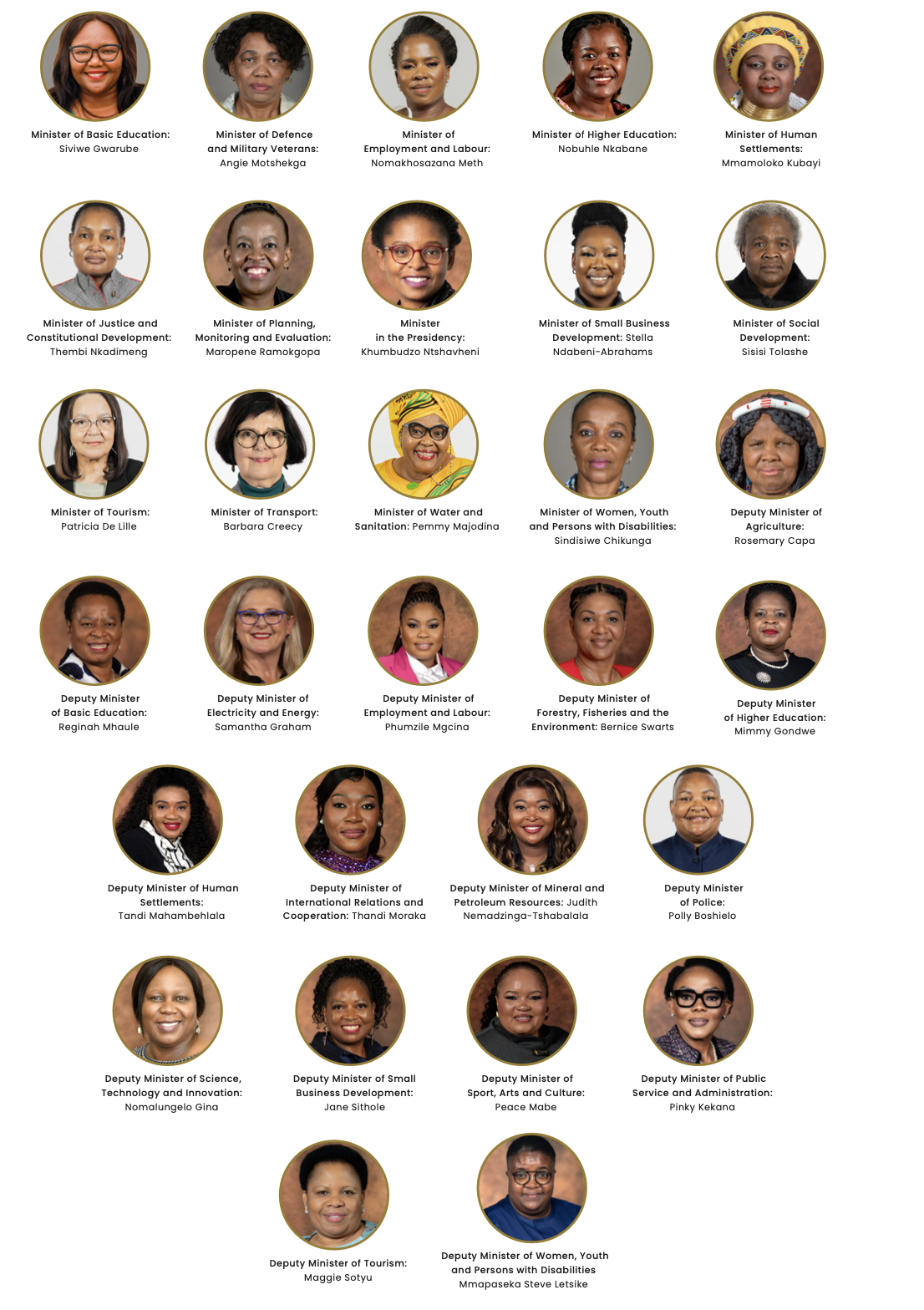
3 minute read
Women Take Their Place in GNU Cabinet
Women Who Are Leading Us
By Jessie Taylor
This year, South Africa's Cabinet, formed under the Government of National Unity (GNU), has seen women taking up 43% of the seats.
This year, women comprised 55% of eligible voters and were represented by 42% of the 14 866 candidates on the IEC’s nominations list. Following the polls in May, the African National Congress (ANC) obtained 40% of the vote, losing its majority. As no party won a sufficient majority to be able to form a government, a coalition government was formed between 11 political parties. In 2019, South Africa's Cabinet reached gender parity for the first time.
In the new GNU Executive of 77 ministers, there are 31 women (40%). Women’s representation in Parliament declined from 46% in 2020 to 43% in 2024.
The 2024 Women's Political Participation (WPP) Africa Barometer found that South Africa is one of only six African nations to have achieved 40% or higher women's representation in their lower houses. The country was ranked 22nd globally for gender parity in its government.
The WPP Africa Barometer found that women's representation in parliament has increased by just one percentage point since 2021. In African parliaments overall, there was an increase from 24% to 25%. Women's representation in cabinets by appointment increased from 22% to 24%
The WPP Africa Barometer estimated that it would take until 2100 at the current rate for gender parity to be achieved. Africa is home to the global leader of WPP (Rwanda, with 61% women in parliament) but also one of the lowest (Nigeria, at 4%).
According to the WPP Africa Barometer, 41 of the 54 African states have implemented some form of quota to increase women's political participation, including South Africa.
Why Gender Parity Matters
With just six years to go until 2030, it is unlikely that the majority of African countries will meet the 50% target set in the Sustainable Development Goals. According to the WPP Africa Barometer, many African countries are still far from achieving women's “equal and effective” participation in political decision-making.
There are many barriers to the participation of women in politics, which result in gender gaps in almost all forms of participation –including engaging with politicians, voting, and standing as political candidates.
The gender gaps stretch from local government through to the highest national offices. Research consistently points to the same factors being responsible for this gender gap: patriarchal social norms, political institutions and individual resources that interact to create complex social systems that inhibit women from being active in political engagement.
Yet stronger equity in governments has been recognised as essential for any thriving democracy. Gender diversity in public institutions is particularly crucial, as this is where decisions that affect people’s rights, behaviours and life choices are made.
Aside from the principles of fairness and equity, including women in politics has show to have social benefits. Canadian researchers even found a direct link between the number of women in senior government positions and the overall health of the population.
Between 1976 and 2009, the percentage of women in Canada's provincial governments rose from 4% to 25%. At the same time, mortality rates declined by almost 40%.
Although the cause of the drop in deaths was partly attributed to increased healthcare spending, the researchers said even with spending differentials factored out, the effect of women in government significantly impacted on mortality rates.
Women Leaders In Cabinet Under The GNU











